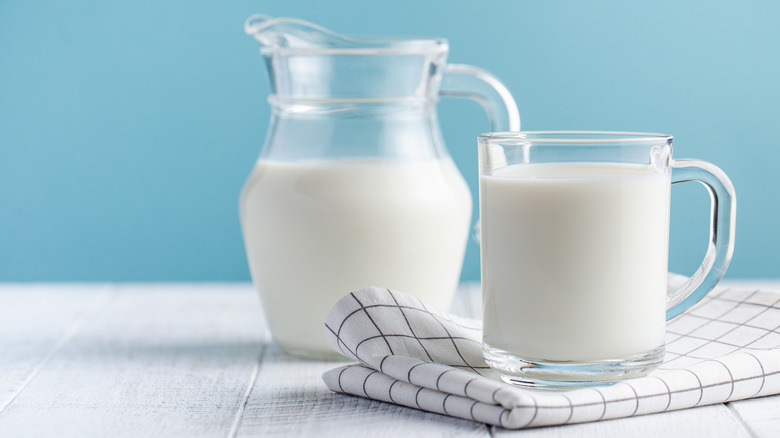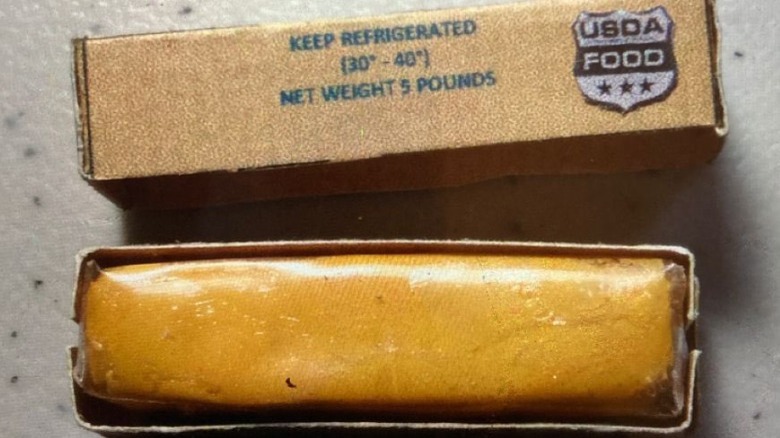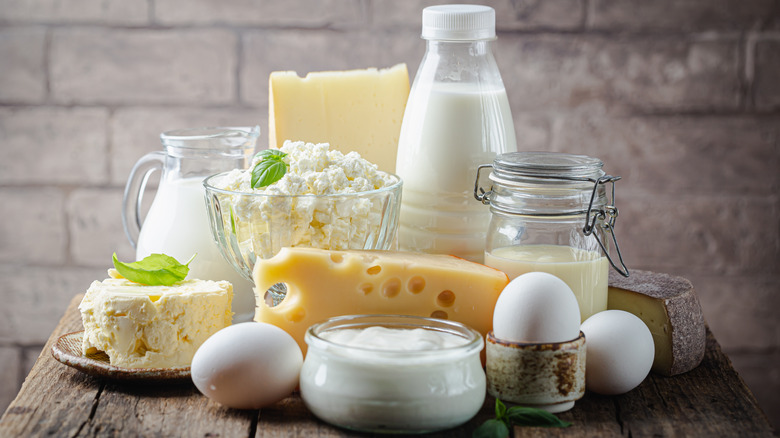The Reason Milk Is The Official Drink Of So Many US States
Did you know that each U.S. state and its territories has dozens of symbols to represent it, such as flowers, animals, and trees? According to State Symbols USA, the trend began with a creation presented at the 1893 World's Fair in Chicago. The National Garland of Flowers, consisting of flowers from each state, spurred the recognition of state flowers and, eventually, hundreds of other symbols.
Currently, there are 39 official classifications of state symbols, and not every state adopts all of them. Designating a state symbol begins with an idea, often created by school-aged children. The persuasive writing campaigns go to the State House for final approval, which is why Arkansasians now celebrate the Arkansaurus Fridayi as their official state dinosaur.
While state symbols often represent crops or animals native to a state, like oranges being Florida's state fruit and peaches Georgia's, other symbols do not represent the state but rather are manufactured for more strategic reasons. Currently, per VinePair, 22 states recognize cow's milk as their official non-alcoholic beverage (yes, some states have a boozy version, too). Curiously, half of those states enacted the law in the same decade — and it's because declaring state foods and drinks is more political than you'd think.
Ever heard of government cheese?
According to the The Washington Post, the U.S. government has been legally obligated to purchase excess milk from dairy farmers since the Agricultural Act of 1949 to stabilize the price of milk and support the dairy industry. During President Jimmy Carter's administration in the 1970s, the country's economy was in crisis, and Americans experienced a shortage of dairy products (via History). Carter granted $2 billion to the dairy industry over the next four years to counter how expensive milk had become with inflation.
Dairy farmers used their newfound riches to ramp up milk production beyond consumer demand, creating a surplus and passing their problem onto the government, which had to purchase the goods. The excess milk was turned into cheese, a less perishable commodity. Described as stinky and pale orange, "government cheese" was sold in five-pound blocks that were like a cross between Velveeta and American cheese. The government at one point housed 500 million pounds of government cheese, most of which was distributed to those in need (even though it was going moldy).
See where this is going? With substantial investments in machinery and land, a cash-strapped dairy farmer is incentivized to produce excess milk when they are financially struggling, since the government is bound to step in and purchase it. The dairy industry's health depends on the government, like conjoined twins.
The government needs the dairy industry to do well
To further increase milk consumption, lawmakers and dairy lobbyists worked together to market the beverage as essential to the American diet, including adopting milk as the official beverage of 22 states in the U.S., per VinePair. According to State Symbols USA, Arkansas selected the symbol in 1985 due to "milk's healthfulness, the desirability of encouraging milk consumption, and the importance of the dairy sector" in the state.
While California produces the most milk in the country, putting out nearly 42 billion pounds in 2021, dairy farming is also a major industry in Wisconsin, New York, Idaho, and Texas (via Statista). South Carolina produces a fraction of the milk these states do, yet milk is its official beverage. Rather than change the symbol when residents questioned it, lawmakers added an official "state hospitality beverage" in 1995: South Carolina-grown tea. Other states followed suit, like Nebraska adopting Kool-Aid as its official soft drink in 1998.
Dairy farmers and the federal government have a shared incentive for the dairy industry to do well. Land O'Lakes, Dairy Farmers of America, and Groupe Danone are the top dairy lobbyists in the country. According to OpenSecrets.org, a research group that tracks money spent in U.S. politics, the dairy industry contributed $5.1 million to the 2020 elections through individual and PAC donations, with most going to Republicans.


